OHS practices - Work environment
Fire
Generally, fire occurs because of poor industrial housekeeping or unsafe work practices. Workplaces are often likely to contain many fire hazards.
Following safe working practices will dramatically reduce or eliminate the risk.
When a fire occurs, evacuation of all people in the building or general area is the highest priority.
What is fire?
A chemical reaction that creates a fire may occur whenever the following three elements exist:
- oxygen
- heat
- fuel.
These elements may be represented in a diagram known as a 'fire triangle'. To prevent a fire from starting, keep the fuel sources and ignition sources separate. Extinguishing a fire involves removing one of the elements.
A fire extinguisher is used to remove heat or oxygen.
Equipment
Virtually all fires begin on a small scale and can easily be extinguished if the correct equipment or fire extinguisher is readily available and properly used.
Portable extinguishers are designed to extinguish small fires before they develop into large uncontrollable fires. The type of fire extinguisher to use depends on the type of fire you are fighting.
| Fire extinguisher | What it is |
|---|---|
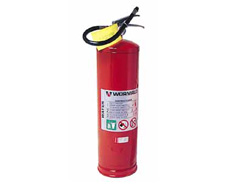 |
Water typeRed with no coloured band. Effective against: |
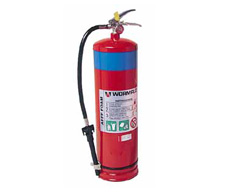 |
Foam typeRed with blue coloured band. Effective against: This type of extinguisher is very handy for flammable liquids. It can extinguish solid materials as well as burning liquids. Don't use it on electrical fires (class E fires). |
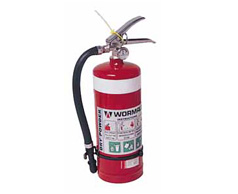 |
Dry chemical powder (ABE) or (BE)Red with white coloured band. ABE effective against: Class A fires – Ordinary combustibles
(wood, paper, cloth, plastics). Class B fires – Flammable liquids (oil, paint, petrol). How it works: |
 |
Wet chemicalRed with oatmeal coloured band. Effective against: |
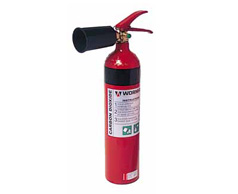 |
Carbon dioxideRed with black coloured band. Effective against: Class E fires – Live electrical equipment (computers, switchboards, power tools) Limited effectiveness for: Class A fires – Ordinary combustible (wood, paper, cloth, plastics, rubber). |
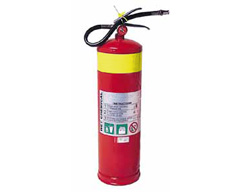 |
Vaporising liquidRed with yellow coloured band. Effective against: Check the characteristics of the specific extinguisher. Some older types of these extinguishers contain halon, an ozone depleting gas. To protect the environment these are banned and should be replaced. |
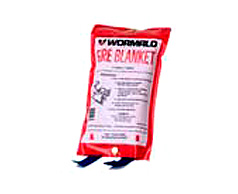 |
Fire blanketEffective against: |
Using a fire extinguisher
PASS is the acronym to help remember the procedure for using a fire extinguisher. It stands for:
- pull the pin
- aim at the base of the fire
- squeeze the trigger
- sweep from side to side.



